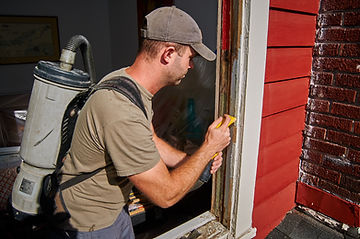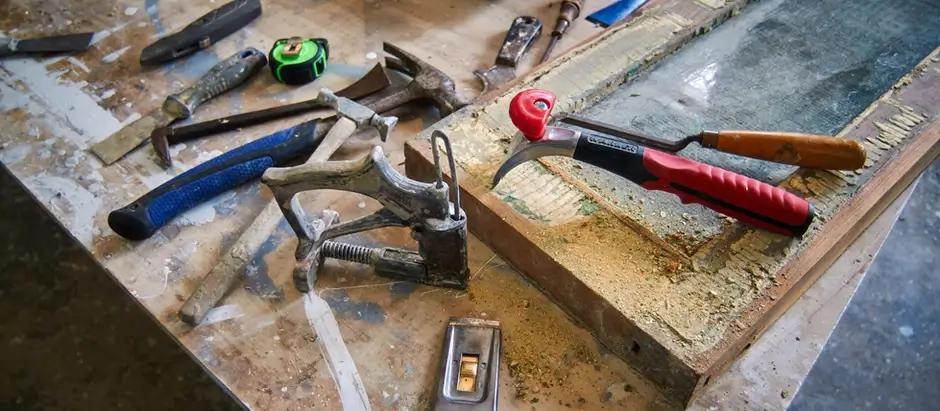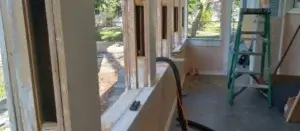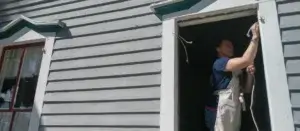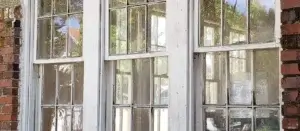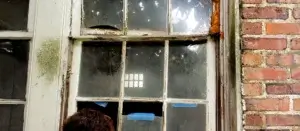Welcome you all to the new Artisan Army Blog! We are glad to have you here as part of the community.
What Are The Levels of Historic Window Restoration?
Level 1. The Mechanical Makeover
The first level of window restoration is The Mechanical Makeover. It is the art of taking the historic wood double hung window apart and putting it back together so that it works like it’s supposed to. It’s fundamental, yet easily overlooked. Many people see an old windows’ disarrayed state and assume many things about how to restore it, but seldom consider taking it apart and putting it back together again.
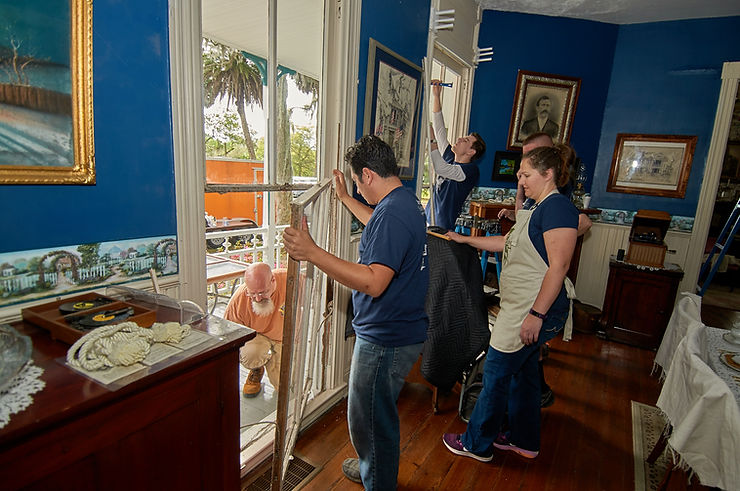
If a sash needs some work done to it, reglazing or wood repair – the way to address it is take the sash out of the opening and put it on a table and work on it. If the frame needs some work done to it, repainting or wood repair, the way to address it is to take the sash out of the opening to clear the path to do the work. That’s the mechanical makeover. It is through this very same operation that other important discoveries are made, that can be addressed now, rather than later, left dormant, undiscovered until it is much too late. The Mechanical Makeover on an historic double hung window, simply put, is the art of pulling the interior stops, bottom sash, parting bead and top sash out, replacing the ropes, and putting everything back together in a way that makes it easy to do future, higher level work on the window – say scraping, reglazing, dutchman repairs and painting. Many are fooled by the turn of the century double hung windows simplicity, failing to realize that the simplicity is the result of centuries of trial and error and subsequent innovation. By design, the double hung window is meant to be taken apart from inside the building. It is within this level one that the practitioner is introduced to terminology, methods and tools that will be used in later and higher levels.
Level 2. Stripping and Prepping.
The second level of window restoration, Stripping and Prepping, is often combined with the level one Mechanical Makeover, especially regarding the window frame that encases the sash. This may indeed be the most involved level of all, because while it is simple, it is also the most labor intensive aspect of window restoration. Using tools such as scrapers, sanders, chisels, hammers, putty knives and so forth, the practitioner removes all the unnecessary and failing paint, glazing, glass and so forth to investigate and make repairs before applying primers, cutting glass and glazing. The romantic and excited people usually like to jump immediately into this level, because they might see failing paint, glazing falling out, sash painted shut and any other number of problems. All these problems are wonderful to solve, and they are even easier to solve if the Mechanical Makeover has been applied. It is at Level 2 that for bigger projects, that the first cycle of work ends, as glazing putty has to set up and primer has to dry. There’s what is known as a hard stopping point, and it’s at this point that the practitioner goes and opens another window to cycle through the first two levels again and again until it’s naturally time to begin work on
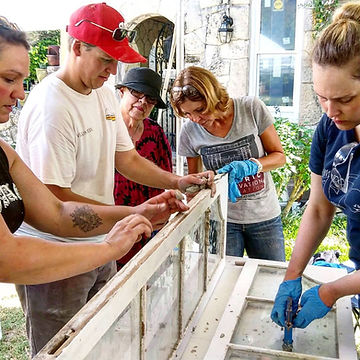
Level 3. Finishing and Tuning. The third level of Window Restoration, Finishing and Tuning assumes that all of the Level 1 and 2 work has been completed. All the frames have received the Mechanical Makeover, failing paint has been scraped away from the frames and sash, glass has been reinstalled, putty has set up – everything is ready to paint. If everything has been performed correctly in Levels one and two, Level three is easy and pleasurable. It is the realm of finish painting, when the practitioner gets to practice the art of painting a fine line over the glazing and up onto the glass. It’s the finish paint on the interior and exterior of the frame. This is the level of beauty. Level three is also the level of reassembly and tuning, where the sashes are installed into the frame for their final time, the parting beads and stops are installed for the final time, the hardware, newly restored or just new, is installed and adjusted. It might sound simple, and it is, if indeed Levels one and two were performed how they were supposed to be. Level 3 is level 3 because the practitioner understands and can perform the previous levels to make level 3 easy. Any person who has tried to paint a poorly prepped window sash, or assemble a window that hasn’t been mechanically made over well, can attest to this.
Level 4. Carpentry.
Eighty percent of window restoration happens in levels one through three. But its window carpentry that really makes an outfit capable. While the earlier levels offer an introduction to woodworking for window restoration, it is this level that really completes it. Sometimes a window has damage that can’t be repaired with epoxy or a patch. The only solution that will do is mastery of major woodworking tools such as the circular saw, jointer, planer, table saw, routers, drills, miter saws and so forth. Historic wood windows are comprised of what would now be considered custom sized elements, that can’t be found at the normal home stores. Exterior casings that are 4-½” wide and 1-¼” thick, sills that are 1-¾” thick and slope at 10 degrees, jamb legs that have a ½’ dado running up the middle and pulley mortises are only some of the things that will have be handled on short notice. Level four knows how to adjust old casement windows and fit new ones, as well as measure for and order replica sash. A team with a level four, level three and a level one or two will be a formidable force and productive team, able to restore windows at a nice rhythm. Level 5. Joinery.
Level five window restoration is sash making. It is the ability to take rough lumber, mill it to proper dimensions, cut the joints and assemble the pieces into a sash.
We will dig deeper into each of the first 5 Levels as we progress through our series. Guiding you along the way and hopefully helping you to have a successful and rewarding restoration experience. We know many people who took a weekend project on their home and turned it into a lucrative and rewarding career. We can help guide you there if that is your goal. Whatever goal you have with window restoration, we can help to get you there. Stay tuned!
Thanks, and remember: Everyday is an open window of opportunity to restore the past for the future.
